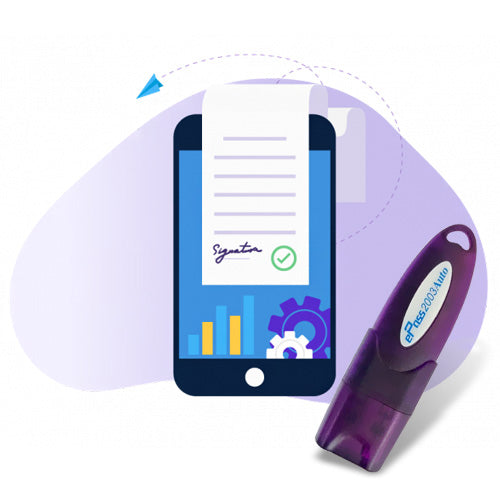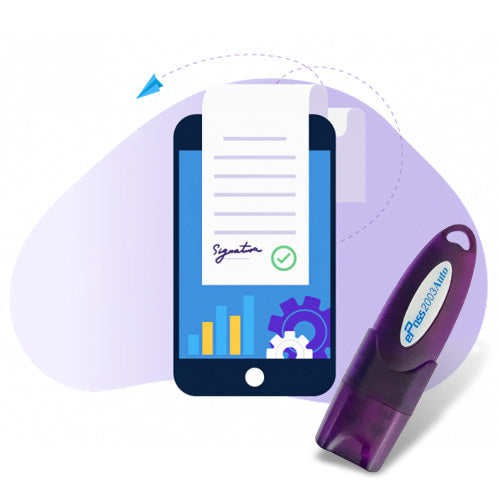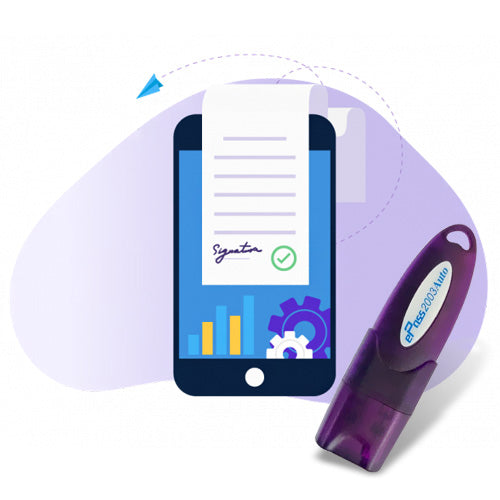Are you looking to streamline your eprocurement process and ensure the security of your digital transactions? One important step in achieving this is by mapping your Digital Signature Certificate (DSC) in your eprocurement system. In this blog post, we will guide you through the process of mapping DSC in eprocurement, ensuring the authenticity and integrity of your digital documents.
To map dsc in eprocurement portal, you can:
- Open the e-tender portal and click Click here to Login
- Enter your login ID, password, and Captcha
- Click Proceed
- You will be redirected to a window with the message You have not registered with DSC yet
What is a Digital Signature Certificate (DSC)?
Before we dive into the mapping process, let's first understand what a Digital Signature Certificate (DSC) is. A DSC is an electronic form of a physical signature that verifies the authenticity of digital documents. It ensures that the document has not been tampered with and provides assurance of the identity of the signer.
Why is Mapping DSC Important in eprocurement?
In the context of eprocurement, mapping DSC is crucial for several reasons:
- Security: Mapping DSC ensures the security of your digital transactions by verifying the identity of the signer.
- Legality: Many countries have laws and regulations that require the use of DSC for certain types of transactions. Mapping DSC ensures compliance with these legal requirements.
- Authenticity: By mapping DSC, you can guarantee the authenticity of your digital documents, providing confidence to both internal and external stakeholders.
Step-by-Step Guide to Map DSC in eprocurement
Now that we understand the importance of mapping DSC, let's walk through the step-by-step process:
Step 1: Obtain a Digital Signature Certificate
The first step is to obtain a valid class 3 Digital Signature from a licensed Certifying Authority (CA). The CA will verify your identity and issue a DSC in the form of a USB token or a software-based certificate.
Step 2: Install the DSC Software
If you have received a USB token, you will need to install the software provided by the CA. This software will enable your computer to recognize and use the DSC stored in the token.
Step 3: Configure eprocurement System
Next, you need to configure your eprocurement system to recognize and utilize the DSC. This step may vary depending on the specific eprocurement software you are using. Consult the user manual or contact the software provider for guidance.
Step 4: Map the DSC
Once your eprocurement system is configured, you can proceed to map the DSC. This typically involves accessing the system settings or preferences and selecting the option to map the DSC. Follow the on-screen instructions to complete the mapping process.
Step 5: Test the Mapped DSC
After mapping the DSC, it is essential to test its functionality. Create a test transaction or document within your eprocurement system and sign it using the mapped DSC. Verify that the signature is applied correctly and that the document's authenticity can be verified.
Conclusion
Mapping DSC in eprocurement is a critical step in ensuring the security and authenticity of your digital transactions. By following the step-by-step guide outlined in this blog post, you can confidently map your DSC and streamline your eprocurement process. Remember, always consult the user manual or seek assistance from the software provider if you encounter any difficulties during the mapping process.
When it comes to eProcurement, Digital Signature Certificates (DSC) play a crucial role in ensuring the authenticity and security of online transactions. But what exactly is DSC and how does it impact the eProcurement process? Let's dive into some frequently asked questions to shed light on this important topic.
What is a Digital Signature Certificate (DSC)?
A Digital Signature Certificate is a secure digital key that is issued by a Certifying Authority (CA) to validate the identity of the sender of an electronic document. It ensures the authenticity, integrity, and non-repudiation of online transactions.
How does DSC enhance security in eProcurement?
By using a DSC, eProcurement platforms can verify the identity of the parties involved in a transaction, ensuring that only authorized individuals can access and sign documents. This helps prevent fraud, tampering, and unauthorized access to sensitive information.
What are the different types of Digital Signature Certificates?
There are three types of DSCs: Class 1, Class 2, and Class 3. Each class offers a different level of security and is used for different types of online transactions. Class 1 is used for individual users, Class 2 for businesses and organizations, and Class 3 for e-commerce and high-security transactions.
How does DSC streamline the eProcurement process?
By incorporating DSCs into the eProcurement workflow, organizations can eliminate the need for physical signatures, paperwork, and manual verification processes. This not only saves time and resources but also reduces the risk of errors and delays in the procurement process.
What are the legal implications of using DSC in eProcurement?
Using DSCs in eProcurement ensures compliance with the Information Technology Act, 2000, and the Indian Evidence Act, 1872. Digital signatures are legally recognized as equivalent to handwritten signatures, making them a secure and legally binding method of signing electronic documents.
As you can see, Digital Signature Certificates play a vital role in ensuring the security, authenticity, and efficiency of eProcurement processes. By leveraging DSC technology, organizations can streamline their procurement workflows, enhance security, and comply with legal requirements.
Are you looking to understand how to map DSC in eProcurement systems? Dive into this FAQ to learn more about this crucial process.
What is DSC in eProcurement?
DSC stands for Digital Signature Certificate, which is a digital equivalent of a physical or paper certificate. It authenticates the identity of the sender of an electronic document. In eProcurement, DSC plays a vital role in ensuring the security and authenticity of transactions.
How to Map DSC in eProcurement?
Mapping DSC in eProcurement involves associating the digital signature certificate with the user's account in the eProcurement system. This process typically requires the user to upload their DSC file and link it to their profile. The system then uses this certificate to verify the identity of the user during transactions.
Why is Mapping DSC Important in eProcurement?
Mapping DSC in eProcurement is crucial for maintaining the integrity and security of electronic transactions. It helps in verifying the authenticity of the sender and ensures that the documents exchanged are not tampered with during transmission. This process adds an extra layer of security to the eProcurement system.
What are the Benefits of Mapping DSC in eProcurement?
By mapping DSC in eProcurement, organizations can enhance the security of their procurement processes. It helps in preventing fraud, unauthorized access, and tampering of documents. Additionally, it streamlines the authentication process and ensures compliance with legal regulations.
How to Ensure Successful Mapping of DSC in eProcurement?
To ensure successful mapping of DSC in eProcurement, users should follow the guidelines provided by the system. They should securely store their DSC files, use them only for authorized transactions, and regularly update their certificates. It is also essential to keep the DSC password confidential to prevent misuse.





